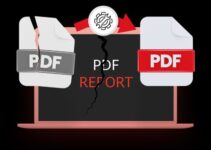Watermarked security papers stand as a pivotal element in safeguarding critical documents. These specialized papers incorporate a mark or pattern that becomes visible under specific circumstances, playing a key role in the authentication process. Their importance spans across various sectors, from banking to legal documents, ensuring the legitimacy and integrity of crucial papers. These watermarks serve as a silent guardian, often unnoticed but always essential in protecting against forgery and counterfeiting. This introduction to watermarked security papers aims to shed light on their significance, use, and the technology behind them, highlighting their role in a world where document security is paramount.
What Are Watermarked Security Papers?

Source: portalsinternational.com
Watermarked security papers are expertly crafted materials designed to incorporate a unique mark or design directly into the paper. This watermark, often discernible when the paper is held against light, is a primary defense mechanism against counterfeiting. The creation of these watermarks involves sophisticated processes, ensuring that each mark is distinct and difficult to replicate. These papers are integral in maintaining the authenticity of various high-stakes documents like currency, legal papers, and certificates. Their use is a testament to the ongoing battle against fraud and forgery, providing a reliable method of verification that is both simple and effective.
Types of Watermarks
There are primarily two types of watermarks in use: visible and invisible. Visible watermarks are apparent to the naked eye when the paper is held up to light, displaying distinct patterns or images. Invisible watermarks, in contrast, require specific conditions or tools for detection, such as ultraviolet light or particular viewing angles. Each type serves a vital role in document security, offering a layer of protection that is both sophisticated and hard to replicate. The choice between visible and invisible watermarks often depends on the level of security required and the intended use of the document.
Historical Use of Watermarked Papers
The history of watermarked papers is as fascinating as it is long, stretching back several centuries. Initially, watermarks were used as a means of identifying the papermaker or the mill where the paper was produced. Over time, these marks evolved into complex designs, often used in significant historical documents and currency. Famous documents throughout history, from medieval manuscripts to historic legal papers, have employed watermarks as a means of identification and protection. This historical perspective not only highlights the longevity of watermarked papers but also underscores their evolving role in document security. The adaptability and enduring relevance of watermarks in the face of changing technologies and methods of forgery exemplify their significance in the protection of important documents.
Modern Applications

In today’s world, watermarked security papers find their use in a broad range of applications, from finance and legal sectors to government and educational institutions. These papers are pivotal in ensuring the authenticity of banknotes, legal contracts, diplomas, and official records. The modern watermark has evolved to incorporate not only intricate designs but also advanced features that are difficult to replicate. These applications underscore the crucial role of watermarked papers in maintaining the integrity and trustworthiness of essential documents.
How Watermarks Work
The science behind watermarks is a blend of art and technology. During the papermaking process, variations in thickness are created to form the watermark. These variations are usually introduced using a dandy roll, a wire cylinder that impresses the pattern into the wet paper pulp. When held up to light, these thinner areas allow more light to pass through, making the watermark visible. The process of embedding a watermark is delicate, requiring precise control and expert craftsmanship. This intricacy ensures that each watermark is unique and difficult to counterfeit.
Benefits of Watermarked Security Papers
Watermarked security papers offer numerous advantages in the realm of document protection. They play a critical role in deterring fraud and counterfeiting, providing a reliable method for authenticating documents. The presence of a watermark adds an extra layer of security, making it challenging for counterfeiters to replicate official documents accurately. This level of protection is invaluable in sectors where the authenticity of documents is of utmost importance. Additionally, watermarks can be customized to suit specific requirements, offering flexibility in design while maintaining high security standards.
Key Features of Watermarks
The effectiveness of watermarks in securing documents lies in their unique features. These include the complexity of the design, the uniqueness of each watermark, and the difficulty in replicating them accurately. A well-designed watermark is intricate, often incorporating fine details that are hard to reproduce without access to the original manufacturing processes. This complexity makes it nearly impossible for counterfeiters to create convincing forgeries. Furthermore, the uniqueness of each watermark adds an additional layer of security, as each pattern is specific to a particular document or batch of papers.
Counterfeiting Challenges
Counterfeiters face significant challenges when attempting to replicate watermarked documents. The sophistication and uniqueness of watermarks make them extremely difficult to reproduce accurately. Counterfeiting attempts often fail to replicate the intricate details and specific characteristics of genuine watermarks, leading to easily detectable forgeries. The ongoing advancements in watermarking technology continue to raise the bar for counterfeiters, making it increasingly challenging for them to mimic these security features successfully.
How to Verify Watermarked Documents

Source: gbgplc.com
Verifying the authenticity of watermarked documents is typically straightforward. The most common method involves holding the document up to a light source, which reveals the watermark. This simple yet effective approach allows individuals and organizations to quickly check the legitimacy of a document. In cases of invisible watermarks, specific tools or conditions might be required for verification. Educating people on how to identify genuine watermarks is an important step in ensuring the effectiveness of this security measure.
Evolving Security Measures
The field of watermark technology is continually evolving, adapting to new challenges and incorporating advanced techniques. In the digital age, this includes the development of digital watermarks, which are used to protect electronic documents and digital media. These new forms of watermarks blend traditional principles with modern technology, offering enhanced security for both physical and digital documents.
Conclusion
Watermarked security papers play a vital role in protecting sensitive documents from forgery and counterfeiting. Their significance extends beyond mere physical security, representing a commitment to authenticity and trust in various industries. As technology advances, the evolution of watermarking techniques continues to bolster document security, adapting to new challenges and threats. Understanding and appreciating the importance of watermarked security papers is crucial for anyone concerned with the integrity of vital documents, whether in business, government, or personal affairs.







